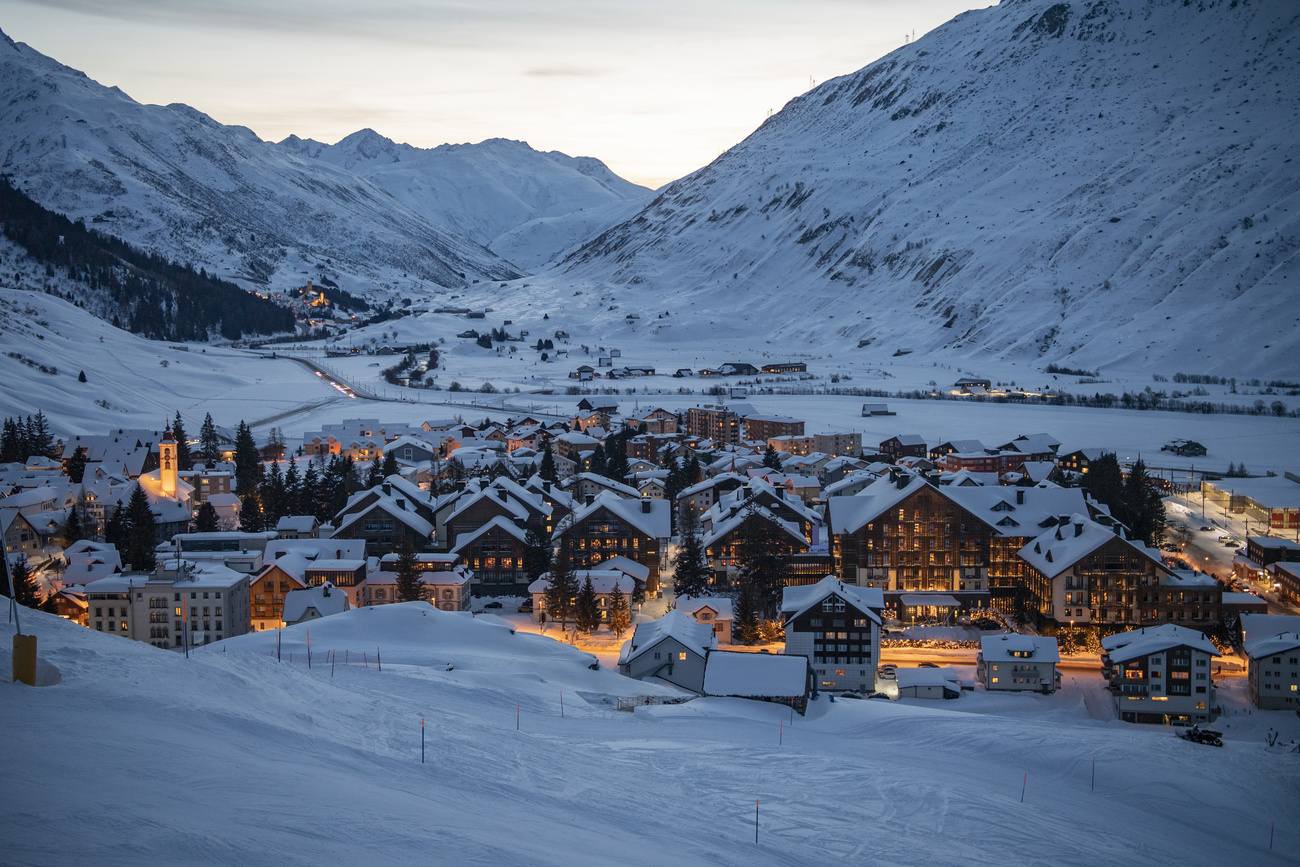Human cost in climate change needs attention

Ahead of the United Nations Climate Change Conference in Copenhagen, a Swiss migration expert has called for a greater focus on the plight of humans.
Etienne Piguet of Neuchâtel University tells swissinfo.ch how he is hoping the conference’s final declaration will give a “concrete indication” of what climate change means for at-risk populations.
Although it is hard to determine how many people may become “climate migrants”, political awareness of the human and social aspects of climate change needs to be greater, he says.
The UN conference takes place in December and is due to decide on emission reduction measures to replace those agreed in Kyoto in 1997 which expire in 2013.
swissinfo.ch: What environmental forces cause people to migrate?
Etienne Piguet: A distinction should be made between events that force people to leave – the symbolic example being rising sea levels, especially if the projected ten metre increase in sea levels happens – and other consequences of climate change, such as disruptions in rainfall patterns, increased frequency of droughts and hurricanes.
One can also differentiate between the gradual development of sudden, violent events that can occur due to climate change – a landslide in the Andes, for example, can lead the population to move a short distance away – and [changes] that are likely to happen again, as various studies show.
Rising sea levels is a typical example, however, of a gradual change. Levels are rising by up to several millimetres a year. Gradual desertification is another example. In these cases, migration is much more gradual, but without the phenomenon of returning populations. The migration is planned and relatively permanent.
swissinfo.ch: Is there a sense of the proportion of people who could migrate in such cases?
E.P.: In the specific case of rising sea levels, there are projections based on the number of people living at a particular altitude. There are believed to be 150 million people living below one metre above sea level, and 600 million below ten metres.
But when dealing within the margin of one metre, migration is not inevitable. It is still possible to build dams. Last December the Dutch parliament approved substantial credit for rebuilding the whole system of polders and dikes. But while The Netherlands has the financial means, [a country like] Bangladesh has less.
swissinfo.ch: Getting back to numbers: how many climate migrants are there today and will there be in the future?
E.P.: We must tread carefully here. More militant organisations have put forward figures and say there are already 200 million environmental migrants. There is little scientific evidence to support these figures.
A fairly clear consensus exists among researchers to reject any global counts, simply because in the vast majority of cases, many factors come into play. This makes it hard to label people environmental migrants.
As for forecasts, all sorts of numbers are circulating, predicting as much as one billion people displaced. But there is no way of making estimations based on cases as diverse as the rising sea levels on the one hand and the increased frequency of hurricanes on the other.
swissinfo.ch: Is the international community sufficiently aware of climate migration and what can we expect from the Copenhagen conference?
E.P.: Political awareness of the human and social aspects of climate change could be significantly strengthened, likewise in research.
Any concrete indication of what climate change means for populations in the final declaration in Copenhagen would be a good thing. Whether migration is mentioned explicitly or not is somewhat secondary. Migration is just one of the possible outcomes of climate change.
Pierre-François Besson, swissinfo.ch (Adapted from French by Jessica Dacey)
The first UN climate conference, popularly known as the Earth Summit, was held in Rio de Janeiro in 1992. It produced an international environmental treaty, the Framework Convention on Climate Change.
A follow-up conference in Kyoto, Japan, in 1997 produced the Kyoto Protocol, with binding commitments to reduce greenhouse gases. The 178-nation accord is a 1997 annexe to the 1992 treaty that requires 37 industrial nations to reduce greenhouse gas emissions by an average of 5% below 1990 levels by 2010.
The UN Climate Change Conference in Copenhagen from December 7-18, 2009 is expected to lead to a post-Kyoto climate agreement. Negotiations will focus on reducing human causes of climate change (mitigation) and adaptation as well as the needs of developing countries (financial, technological, institutional).
“These issues should be top of the agenda,” says Jean-Philippe Chauzy, spokesman for the International Organization for Migration.
“We’ll see what comes out of Copenhagen, and if the word ‘migration’ appears in the final text. For us it is inconceivable that the international community can ignore the impact of climate change migration. There is a clear need today for policy responses.”

In compliance with the JTI standards
More: SWI swissinfo.ch certified by the Journalism Trust Initiative












You can find an overview of ongoing debates with our journalists here . Please join us!
If you want to start a conversation about a topic raised in this article or want to report factual errors, email us at english@swissinfo.ch.